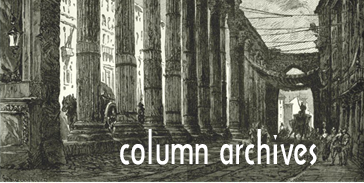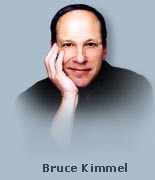Well, dear readers, occasionally I go in the book room to peruse and sometimes I find something I didn’t even remember I had. For example, last night I found a bound volume of Saturday Review magazines – this volume including weekly issues from May through August of 1956. So I took it in the den and whilst catching up on my CD listening I used my trusty antique magnifying glass to read stuff from these interesting magazines. Never as popular with the populace as Time or Newsweek or Look or Life, it had interesting theater and film criticism, music and book criticism, forward-thinking articles, whole issues devoted to recordings and recorded sound (this was a full two years before stereo would start appearing) and lots of other interesting stuff. The very first issue had a cover featuring Robert Weede, who was about to open a new musical called The Most Happy Fella, and the story on him inside was wonderful. The most talked about book in May of 1956 was – Grahame Greene’s The Quiet American. Playing at Radio City Music Hall was The Swan, the Swan song of Grace Kelly. At the Paramount was The Man Who Knew Too Much.
Two weeks after the Robert Weede story appeared, the show opened and here is the beginning of the magazine’s theater critic, Henry Hewes who, the week before had given a huge pan to show called Waiting for Godot. “When a musical-comedy composer turns to opera he is apt to seem a child on a man’s errand. So it is with Frank Loesser, whose The Most Happy Fella is a dull, poorly-blended mixture of musical trifles.” He does go on to be amazed that the mainstream press embraced the show. Mr. Hewes was tough, no question.
In the next issue there’s a special large section called Recording Section. There are lots of reviews and ads for records and hi-fi equipment, including the new Garrard turntable that can be had for a cool eight-nine bucks – those ads go on for pages and pages, and then comes a very intriguing article about recent developments in tape being used for TV programs. The author talks about the RCA and Ampex Video Recorders, then says tape will replace the need for kinescopes. But then comes the part that made my eyes widen: “Videotape may prove to be extremely useful in film production, as a primary process to permit immediate viewing of scenes. Its use may also simplify the production of film shots involving fades, dissolves, double exposures and other intricate shots.” But the next part’s the grabber – remember, this is 1956, dear readers: “Whether Hollywood will adopt TV cameras and videotape for feature production and distribution remains to be seen. It is doubtful to this writer, that videotape will take the place of present-day high quality release films. But more improbable events have happened and we may someday go to our favorite movie house to see a tape instead of a film. We may also someday rent or purchase a tape of foreign scenes or of educational matter to play back on hour home television screens, or record a ball game or an opera from the TV receiver for reproduction at will. So goes the saga of tape.” Amazing, no? And the subsequent issues are chockfull of other interesting stuff – my favorite of all the articles after that one was the one where the author spoke of the nostalgia-laden record collector who rather than embracing the new-fangled long-playing record was now going out to used stores to find old 78s, which they’d embraced anew. Sound familiar at all? 1956.
Yesterday was basically a day of rest, but not really. I had to have conversations about this film music thing that happens the day after the Kritzerland show – I think everyone if finally on the same page, so that’s good. I got about seven hours of sleep, then at one I rustled up some pasta with sautéed chicken in a kind of pink sauce – in other words marinara with some low-fat milk added until it was pinkish. It was very tasty and I only made about five or six ounces of pasta, which was plenty. I had the remainder of the cherry chip ice cream a bit later.
As mentioned, I listened to a few SACD releases. I finished the RCA Living Stereo of the Brahms and Tchaikovsky violin concertos played by Heifetz in that amazing three-channel sound. Spectacular. Then I listened to a Japanese import SACD of the Miles Davis classic, Kind of Blue. I’ve had so many incarnations of this album, from LP to mini-LP imports – they all sounded okay. But this SACD (from what I can glean there was at least one if not two other SACD releases of this that people didn’t think much of) was unbelievable. Of course I listened to the multi-channel version and the clarity literally took my breath away and cleared my sinuses. The piano was rock solid (it’s always sounded a bit wavy to my ears), every instrument was perfectly delineated, and it was an aural feast. For fun, I then went to the stereo layer and there was the wavy-sounding piano with the instruments kind of all bunched together. Then I heard a Bill Evans Trio CD that wasn’t nearly as good and was just plain two-track stereo. And then a Heifetz/Piatorgsky thing that included a wonderful Rozsa piece. Again, just two-channel stereo but sounding very good indeed. Then I tried a bit of the Andre Cluytens stereo Ravel albums he did, and which, in the big Cluytens box set I raved about, sounded great. Well, I’ll give it a second chance, but on first hearing it sounded pretty bad, I thought – shrill, with little low end, and I’ll now play the CD version from the box because that sounded great to my ears. But, as I said, I will give it a second chance.
I never got around to watching anything, but did listen to five CDs from the Strauss, Richard box set with Rudolph Kempe conducting. It’s too bad Strauss never wrote a film score because all his music sounds like film music and was clearly an influence on Max Steiner and Erich Wolfgang Korngold, and later Jerry Goldsmith and John Williams. Strauss lived until the mid-1940s so he certainly could have done a film score, but he was probably smart enough to know that would not have probably made him happy. Of course, the opening of his Also Sprach Zarathustra is one of the most famous pieces of film music in history, used for the opening of 2001: A Space Odyssey. And his Rosenkavalier waltzes were pretty much “borrowed” by Jerry Goldsmith for his The Boys from Brazil score. Now, shockingly, most of this music is new to me – I’ve only heard a handful of pieces, so this set is like stepping into a wonderful land of beautiful melodies and sublime orchestration. This set is highly recommended by the likes of me, but no one bit so off to Amoeba or up on Amazon it goes, I’m afraid.
I did more work on the computer, a little at the piano, had more telephonic calls and relaxed.
Today will be more of the same but hopefully with no work. I need to completely clear my head for the week ahead, which is going to be a little nutty, busy-wise. I’ll eat, listen to music, watch something, jog, and relax.
Tomorrow is our first Kritzerland rehearsal, then the rest of the week is meetings and meals, a rehearsal for the film music thing, our second Kritzerland rehearsal, writing the commentary for the film music thing, announcing the new Kritzerland release (looks like that will happen Tuesday morning unless we get lucky today), our stumble-through, then sound check and show, then the film music thing the following day.
Well, dear readers, I must take the day, I must do the things I do, I must, for example, eat, jog, listen, watch, and relax. Today’s topic of discussion: It’s free-for-all day, the day in which you dear readers get to make with the topics and we all get to post about them. So, let’s have loads of lovely topics and loads of lovely postings, shall we, whilst I hit the road to dreamland, happy to have had such fun going through the bound volume of Saturday Review on a Saturday.








